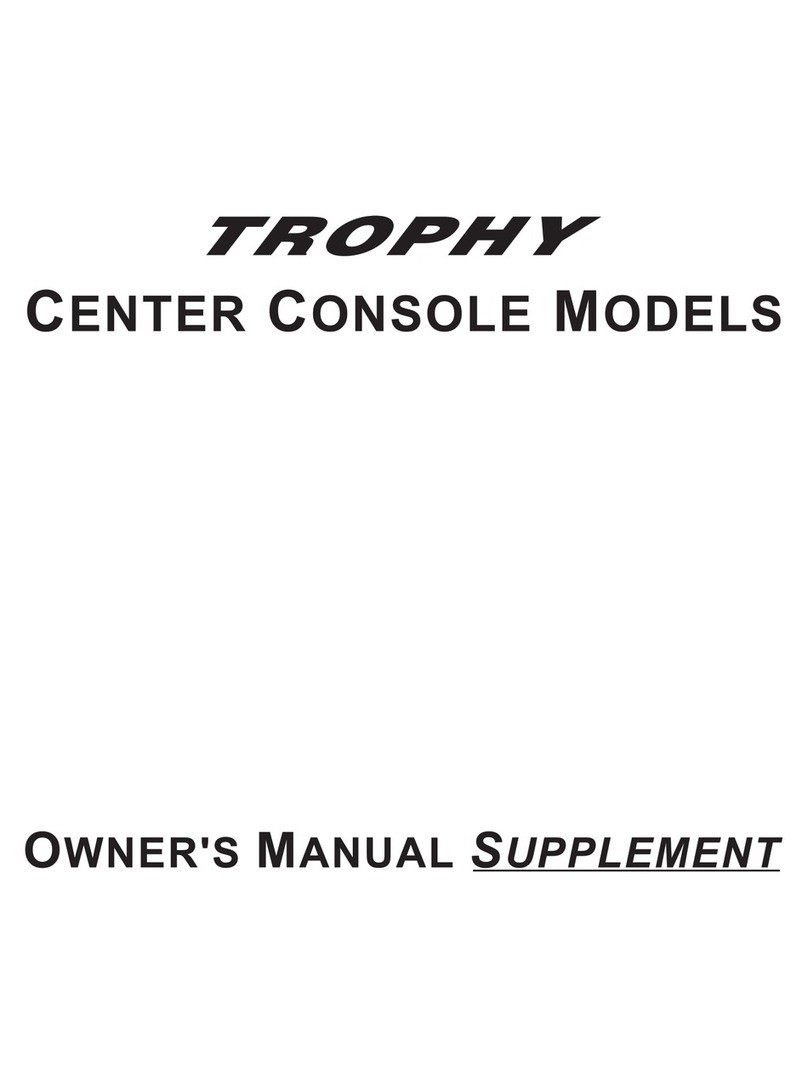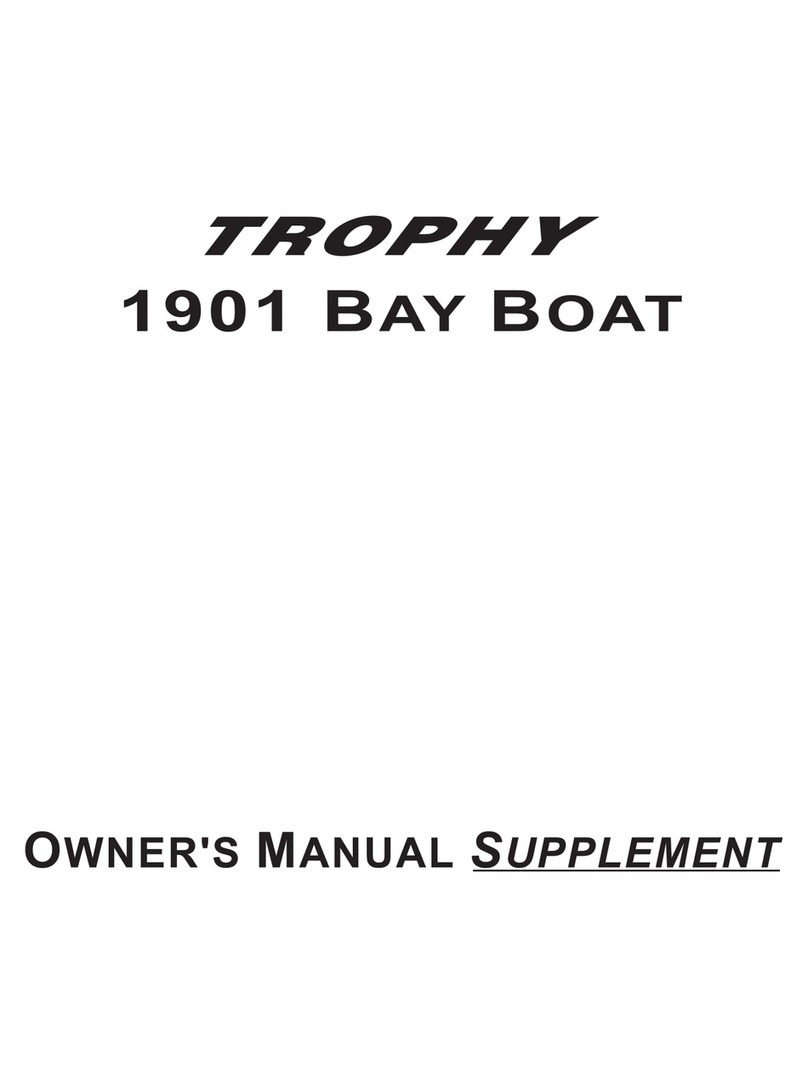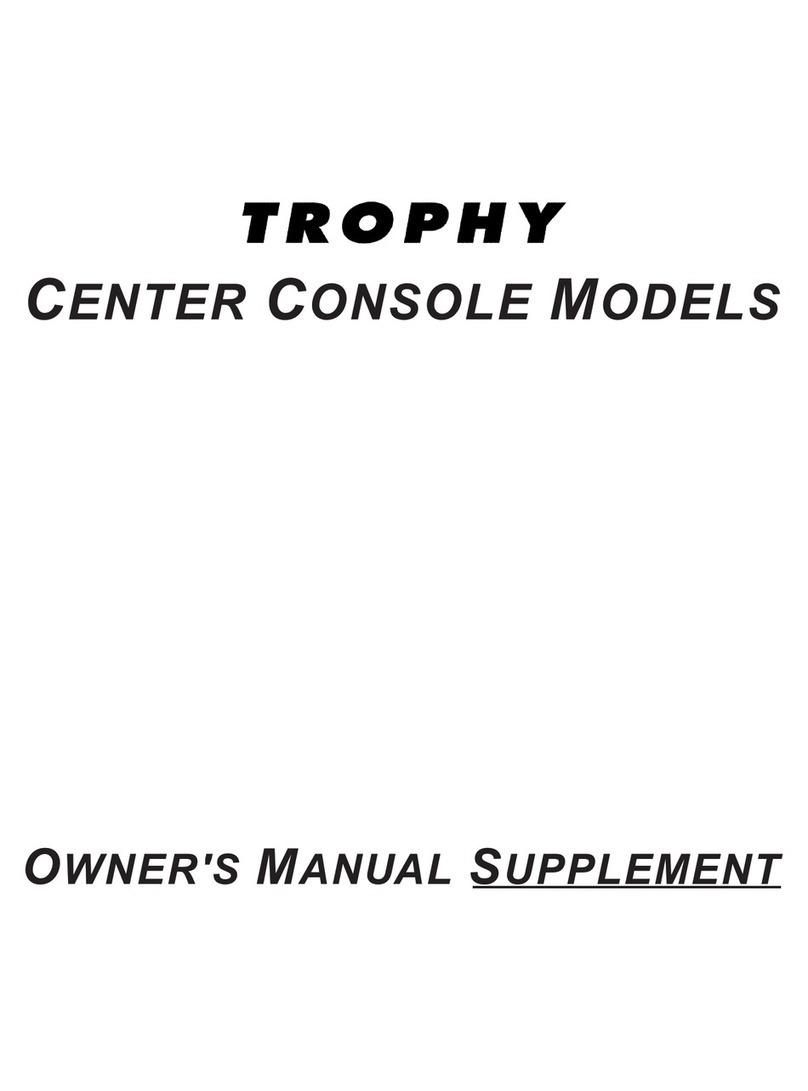
3
2902 Walkaround •Owner’s Manual Supplement Chapter 1: Welcome Aboard!
Engine & Accessories Guidelines
•Your boat’s engine and accessories were selected to provide optimum performance and service.
•Installing a different engine or other accessories may cause unwanted handling characteristics.
•Should you choose to install a different engine or to add accessories that will affect the boat’s running trim, have
an experienced marine technician perform a safety inspection and handling test before operating your boat again.
Certain modifications to your boat can result in cancellation of your warranty protection. Always check with
your dealer before making any modifications to your boat.
Engine & Accessories Literature
•The engine and accessories installed on your boat come with their own operation and maintenance manuals.
•Read and understand these manuals before using the engine and accessories.
•Unless noted otherwise, all engine and accessory literature referred to in this supplement is included in your
owner’s packet.
Qualified Maintenance
•Failure to maintain your boat’s systems (listed in the warning above) as designed could violate the laws in your
jurisdiction and could expose you and other people to the danger of bodily injury or accidental death.
•Follow the instructions provided in the Sport Boat Owner’s Manual, this Owner’s Manual Supplement, the
engine owner’s manual and all accessory instruction sheets and manuals.
Special Care For Moored Boats
•Whether moored in saltwater or freshwater, your boat will collect marine growth on its hull bottom.
•This will detract from the boat’s beauty, greatly affect its performance and may damage the gelcoat.
•Periodically haul the boat out of the water and scrub the hull bottom with a bristle brush and a solution of soap
and water.
When storing your boat please refer to your engine’s operation and maintenance manuals.
NOTICE
To maintain the integrity and safety of your boat, allow only qualified personnel to perform
maintenance on, or in any way modify: The steering system, propulsion system, engine control
system, fuel system, environmental control system, electrical system or navigational system.
WARNING!
!
•To help seal thehull bottom and reduce the possibility of gelcoatblistering on moored boats,
apply an epoxy barrier coating. The barrier coating should be covered with several coats of
anti-fouling paint.
•Many states regulate the chemical content of bottom paints in order to meet environmental
standards. Check with your local dealer about recommended bottom paints, and about the
laws in effect in your area.
NOTICE


































